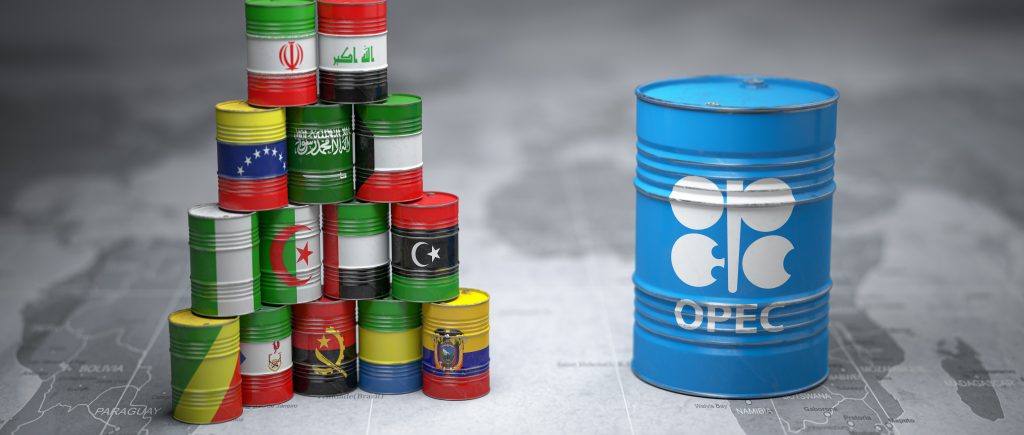OPEC and its allies will start two days of meetings on Wednesday to decide whether to pump more oil into the market or curb supplies amid slumping oil prices and concerns that the mutated Omicron strain of the coronavirus could dampen global energy demand. According to a document cited by Reuters, OPEC+ sees global oil supply surpluses widening to 2M barrels per day (BPD) in January
OPEC expected the oil surplus to increase to 2 million bpd in January, 3.4 million bpd in February and 3.8 million bpd in March 2022.
The Organization of the Petroleum Exporting Countries, through a document during today’s meeting, said that the demand for transport fuels in Europe may also be affected by the mutated Omicron, especially Africa as well.
Oil prices fell as OPEC released few forecasts from Wednesday’s peak, posting gains of around 5% earlier than forecast.
The price of a barrel of American Nymex crude rose by 3.8%, at levels of 68.7, down from the levels above 69 dollars earlier.
While the benchmark Brent crude trimmed its gains to reach 3.7%, reaching levels of $71.8, down from levels near $73 earlier.
Algeria’s Energy Minister, Mohamed Arkab, warned of the danger of the new Omicron mutator on crude oil markets, saying that the OPEC+ alliance will work to provide oil supplies in global markets and take all necessary measures to maintain market balance in light of the new Omicron mutator.
The Algerian official explained that the OPEC + alliance aims to maintain a balance in the markets and that the market fundamentals are sound and balanced for the benefit of producers and consumers at the same time.
A number of OPEC+ ministers, including Russia and Saudi Arabia, say that there is no need for the group to take a knee-jerk reaction to adjust production policy.
Since August, the group has been adding 400,000 barrels per day to global supplies, while gradually abandoning record cuts agreed in 2020 when demand waned due to Coronavirus.
 Noor Trends News, Technical Analysis, Educational Tools and Recommendations
Noor Trends News, Technical Analysis, Educational Tools and Recommendations





